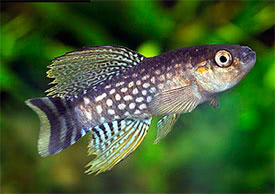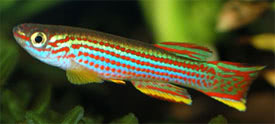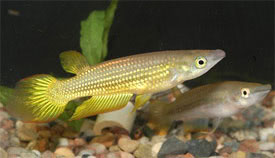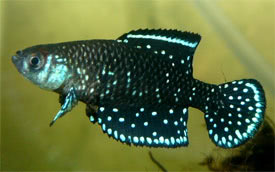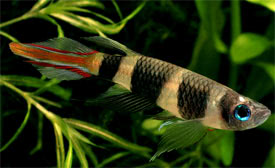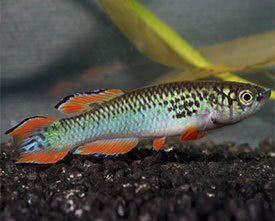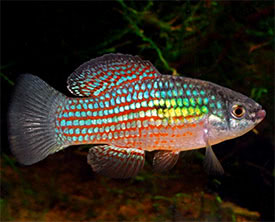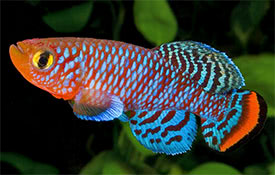
 Magyarul / Hungarian
Magyarul / HungarianKillifish are the egg-laying cousins to live bearing fish such as mollies and guppies. The egglaying cyprinodonts have always been regarded as difficult because they are believed to require special conditions, namely soft acid water, but while this is true for some species it certainly isn't the rule for all of them. They are generally hardy, small fish that require little space and very little equipment to maintain them. Many are exceptionally colourful and this alone makes them good aquarium fishes, but to see them at their best requires dedication on the part of the aquarist. In nature, killifishes are found throughout the tropics with one exception, Australia, and some have even entered the temperate zones. Several species also inhabit brackish water and a few actually live in pure salt water. Killies exhibit interesting spawning behaviors, and their eggs are unusually tough and resistent to temperature changes and dessication, so they are commonly traded through the mail. Killifish are divided into three general breeding groups of annuals, semi annuals, and non-annuals. Killifish are predominantly insectivores, and a supply of live foods is very important as some will refuse to take anything that doesn't move. Daphnia, Cyclops, and mosquito larvae are the usual standbys, but you can also hatch brine shrimp eggs, or culture whiteworm and microworms, to feed to your fishes. Feeding is very important if you are to achieve any success in breeding them, and this applies not only to getting the adults into condition but also to growing on the fry.





